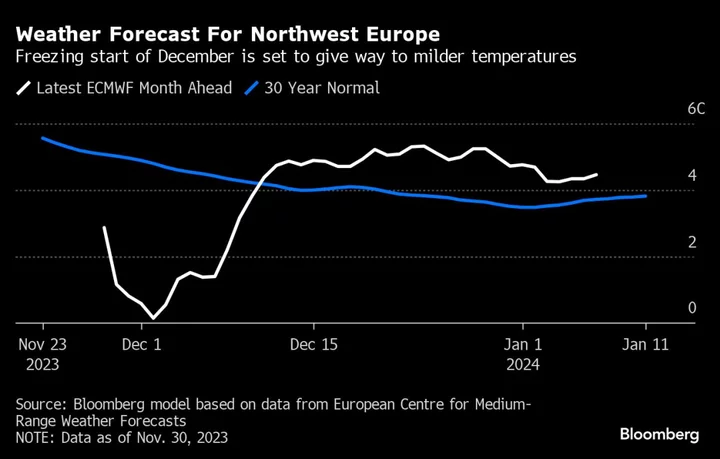
Discovery from space shows that the pyramids were built using water
A landmark discovery on an ancient branch of the River Nile may have solved the mystery of how the pyramids in Egypt were built centuries ago. The now dried-out waterway, which once ran through Giza might have been used to transport the materials that were used to construct the pyramids. The proximity to the waterway might also suggest why there is such a cluster of pyramids in that particular area of Cairo, as the large amount of water would have been able to support the various building blocks needed for the colossal structures. The discovery was made by Dr Eman Ghoneim who used radar satellite data from space to study the Nile Valley which showed an "invisible world of information beneath the surface." Ghoneim presented her research to the 13th Congress of Egyptologists earlier this year. Speaking to IFLScience Ghoneim said: "The length probably was really, really long, but also the width of this branch in some areas was huge. We're talking about half a kilometer or more in terms of width, which is something that is equivalent to today's Nile course width. So it wasn't a small branch. It was a major branch.” The defunct waterway has been dubbed the Ahramat Branch and ran from Giza to Faiyum and amazingly passed through 38 different pyramid sites. However, without confirmation of whether the river was active during the Old and Middle Kingdoms, around 4,700 years ago, cannot fully determine if water was used to help build the pyramids. One indication that it could have been used is that according to Ghoneim these pyramids were "located exactly at the bank of the branch that we found" which could mean that they were "valley temples" which acted like ancient ports. The research might not just unlock the secrets of the pyramids but it could also uncover parts of ancient Egypt that have long been lost as towns disappeared when the Nile naturally migrated. Ghoneim added: "As branches disappeared, Ancient Egyptian cities and towns also silted up and disappeared, and we have no clue actually where to find them." Sign up to our new free Indy100 weekly newsletter Have your say in our news democracy. Click the upvote icon at the top of the page to help raise this article through the indy100 rankings.
1970-01-01 08:00

Billionaire Branson Won’t Put More Money in Virgin Galactic
Richard Branson doesn’t plan further investments in Virgin Galactic Holdings Inc., the unprofitable space tourism venture he founded,
1970-01-01 08:00

Amazon Contracts Rival SpaceX to Launch Internet Satellites
Amazon.com Inc. has signed an agreement with rival SpaceX for three launches of Elon Musk’s Falcon 9 rocket,
1970-01-01 08:00

A huge solar storm is hitting Earth and could cause internet blackouts
A solar storm predicted to hit Earth on Friday (December 1) may cause internet blackouts, according to forecasters. Radio and GPS could also be affected due to the solar storm, also known as a coronal mass ejection (CME), which is caused by interference with Earth’s magnetic field. "A Direct Hit! The impressive #solarstorm launched in the Earth-strike zone has been modeledmodelled by NASA," space weather physicist Dr Skov posted on Twitter/X. "The storm is predicted to hit Earth by midday December 1. Along with two earlier storms already en route means we have a 1,2,3-punch. If the magnetic field is oriented correctly, expect #aurora to reach deep into mid-latitudes." She added: "Amateur #radio & #GPS reception issues are likely, especially on Earth's nightside. G3+ conditions are possible with this storm series." A solar storm can have substantial effects on the Earth, taking place when the sun emits powerful bursts of energy which come from solar flares and CME that contain charged plasma. During which, a stream of an electromagnetic field is directed towards Earth and this causes the aurora borealis. Three solar storms were predicted to advance towards Earth – and some may merge, resulting in increased disruptions to Earth’s magnetic field, according to The US National Oceanic and Atmospheric Administration (NOAA). “Along with two earlier storms already en route [this] means we have a 1,2,3-punch,” Dr Skov said. Consequently, she added there are “excellent chances” of strong G3-level magnetic storms and auroras on Earth. The way the strength of a solar storm is measured is with the letter G and then a number system from 1-5 (1 being the weakest, to 5 being the strongest). So a G3 level storm means radio, internet and GPS could be affected due to the strength of these events. Solar storms are also known to cause electrical grids and knock out satellites, depending on their strength. Meanwhile, experts have warned the solar storm thought to occur today may impact communication systems in high latitudes. “With 3 CMEs already inbound, the addition of a 4th, full halo CME has prompted SWPC forecasters to upgrade the G2 Watch on 01 Dec to a G3 Watch. This faster-moving halo CME is progged to merge with 2 of the 3 upstream CMEs, all arriving at Earth on 01 Dec,” the NOAA said. “G3 (strong) conditions are now likely on 01 Dec,” it added. How to join the indy100's free WhatsApp channel Sign up to our free Indy100 weekly newsletter Have your say in our news democracy. Click the upvote icon at the top of the page to help raise this article through the indy100 rankings.
1970-01-01 08:00

Billionaire Texan Heir Is Helping Bring Back the Woolly Mammoth
A Texas oil heir’s quest to make Dallas a hub for biotech is showing signs of paying off,
1970-01-01 08:00

Europe’s Winter Freeze Set to Give Way to Milder December
Europe’s icy start to December is forecast to give way to milder conditions as the month progresses, providing
1970-01-01 08:00

Is It Time to Change How We Talk About 1.5C?
COP28 Daily Reports: Sign up for the Green Daily newsletter for comprehensive coverage of the climate summit right
1970-01-01 08:00

Meta Says There’s Been No Downside to Sharing AI Technology
Meta Platforms Inc. executives, speaking at an event Thursday, said there’s been no major drawbacks to openly sharing
1970-01-01 08:00

Mysterious yellow glass found in Libyan desert 'caused by meteorite', say scientists
A meteorite which smashed into earth 29m years ago may be behind a strange yellow glass found in a certain part of the desert in southeast Libya and southwestern Egypt, according to researchers. The Great Sand Sea Desert stretches over about 72,000 square kilometres across the two countries, and is the only place where the mysterious yellow material is found on Earth. Researchers first described it in a 1933 scientific paper, calling it Libyan desert glass. Mineral collectors have long valued it for its beauty and mysterious qualities – and it was even found in a pendant in Egyptian pharaoh Tutankhamun’s tomb. The origin of the glass has been a mystery for centuries, but researchers writing in the journal De Gruyter used new advanced microscopy technology to get answers. Elizaveta Kovaleva, a lecturer at the University of the Western Cape, wrote that the glass was caused by “the impact of a meteorite on the Earth's surface”. Writing in The Conversation, she said: “Space collisions are a primary process in the solar system, as planets and their natural satellites accreted via the asteroids and planet embryos (also called planetesimals) colliding with each other. These impacts helped our planet to assemble, too.” She said: “We studied the samples with a state-of-the-art transmission electron microscopy technique, which allows us to see tiny particles of material – 20,000 times smaller than the thickness of a paper sheet. “Using this super-high magnification technique, we found small minerals in this glass: different types of zirconium oxide (ZrO₂).” One of the types of this mineral found in the glass can only form at temperatures between 2,250 celsius and 2,700 celsius. Toasty. Kovaleva said: “Such conditions can only be obtained in the Earth's crust by a meteorite impact or the explosion of an atomic bomb.” However, she wrote, there are just as many questions as there are answers. The nearest known meteorite craters are too far away and too small to be the cause of that much glass all concentrated in one part of the world. “So, while we've solved part of the mystery, more questions remain. Where is the parental crater? How big is it – and where is it? Could it have been eroded, deformed or covered by sand?” Safe to say, the scientists will keep on looking until they have the answers. How to join the indy100's free WhatsApp channel Sign up to our free indy100 weekly newsletter Have your say in our news democracy. Click the upvote icon at the top of the page to help raise this article through the indy100 rankings.
1970-01-01 08:00

Terrifying 'ice finger of death' killing everything it touches caught on camera
Life forms surviving under sea ice have it pretty tough at the best of times, but they face a threat rarely caught on camera which is as terrifying as anything on the planet. BBC crew captured a brinicle on film for the first time for the BBC series Frozen Planet in 2011 and the natural feature resembling a deathly ice finger is the stuff of nightmares. A brinicle forms under sheets of sea ice, pushing downwards and posing existential risks to life forms on the ocean floor. As shown in footage captured for BBC Earth Unplugged, the natural formations can trap creatures and prove deadly – but how do they form? Well, salty water surrounding sea ice can form channels and inlets within blocks of ice. Ice then protrudes through the salty water and heads downwards as the salty water is heavier than the water around it. The salt water also freezes at a lower temperature to the water around it, meaning that it freezes everything it touches as it descends. Safe to say, if you see one of these heading towards you, you’d better start praying. It comes after it was discovered that the world’s biggest iceberg is drifting away from the Antarctic after having been grounded there for more than 30 years. The iceberg, which has the catchy name A23a, split from the Antarctic’s giant Filchner Ice Shelf in 1986, but has been stuck to the ocean floor since shortly after that time. Now, according to the British Antarctic Survey, it is on the move. Sign up for our free Indy100 weekly newsletter How to join the indy100's free WhatsApp channel Have your say in our news democracy. Click the upvote icon at the top of the page to help raise this article through the indy100 rankings
1970-01-01 08:00

There is a scientific reason some people can't stand Brussels sprouts
Christmas is approaching, and that means so are the overcooked, bitter, totally unnecessarily mountains of Brussels sprouts that your family insists on serving. Every, damn, time. Well, that’s how some people might see it, anyway. The fact is, love them or hate them, Brussels sprouts are always going to be controversial – a little like that awkward uncle who rocks up every Christmas and starts a big family row. But it turns out that sprout-haters have actually got a very sound, scientific excuse for their picky eating on Christmas day – and it's all to do with genetics. Stacey Lockyer, nutrition scientist at the British Nutrition Foundation, told Huffpost: “Brussels sprouts are one of a group of vegetables known as cruciferous vegetables or Brassica which also includes broccoli, cabbage, cauliflower and kale. “Brassica contain high amounts of compounds called glucosinolates which, when metabolised in the body, give them their characteristic sharp or bitter taste.” An area covering 3,240 football pitches is dedicated to growing Brussels sprouts in the UK. If you were to line them up individually, they'd stretch from London to Sydney. Despite this, some people are just genetically predisposed to hate that bitter taste. Lockyer added: “Whether we like or dislike certain foods is determined by different factors (such as previous experiences with a food and number of exposures), but some studies have demonstrated that the perception of bitterness of cruciferous vegetables is linked to genetic differences in taste receptors on the tongue.” In fact, a 2011 study by Cornwall College found sprouts contain a chemical which only tastes bitter to people who have a variation of a certain gene. The research found that around 50 percent of the world’s population have a mutation on this gene. About half of us just don’t taste the bitterness usually associated with sprouts, and therefore actually like them. (Imagine!) Nonetheless, hope is not lost. A University of Warwick study found that as we get older, we’re more likely to like sprouts. Research fellow Lauren Chappell said in a blog post: "Sulphur is responsible for the bitter sprout taste. As we age, we lose tastebuds, which can make them more palatable—potentially why adults who hated sprouts as children now embrace them in seasonal dishes.” Which means, regrettably, that your grandparents were probably right all along. How to join the indy100's free WhatsApp channel Sign up to our free indy100 weekly newsletter Have your say in our news democracy. Click the upvote icon at the top of the page to help raise this article through the indy100 rankings.
1970-01-01 08:00

There's a reason why we've never found fire anywhere other than on Earth
Fire might seem like one of the most elemental things in the natural world, but it’s never been found anywhere other than Earth. It’s because the creation of fire relies on very specific circumstances. In fact, if fire was ever found on another planet, it would be a good indicator of the possible existence of life. Oxygen is key to fire, and while it’s particularly prevalent in the universe, Earth’s atmosphere features an abundance of the element in the right molecular form for it to form. Even then, the way the Earth’s atmosphere has changed over its lifespan is also crucial to conditions being fostered where fire can form [via IFLScience]. For millions of years, in fact, there wasn’t enough oxygen in the atmosphere to create fire. Before the Middle Ordovician period, when there was far less oxygen, there’s no evidence of fire whatsoever. Most of the fuel that fire needs is also directly related to life existing on the planet – think wood, oil and coal. Without life, there isn’t an awful lot of fuel going around, which just shows why the existence of fire on another planet would be a very promising sign when it comes to exploring the universe for life. Despite fire being much rarer in the universe than most might think, it was previously confirmed that humans in Europe may have mastered fire long before we previously thought. According to a study published in Scientific Reports, humans made the discovery around 245,000 years ago, up to 50,000 years earlier than scientists believed, Researchers studied samples from the Valdocarros II, a huge archaeological site found east of Madrid, Spain. Using chemical analysis, they found certain compounds that show things were burnt by fire in "organised" social events, rather than through accidents or wildfires. Sign up for our free Indy100 weekly newsletter How to join the indy100's free WhatsApp channel Have your say in our news democracy. Click the upvote icon at the top of the page to help raise this article through the indy100 rankings
1970-01-01 08:00
